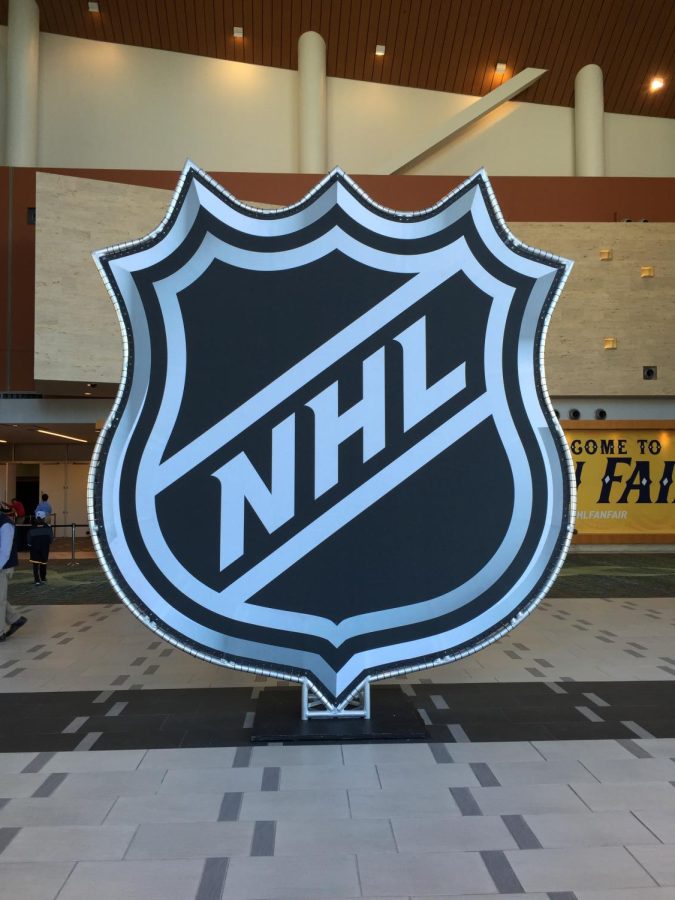NHL Scoring on the rise
May 13, 2022
The NHL is the premier league for hockey. What comes with a premier league is a lot of skill. As skill rises, the scoring rises as well.
First is the context. Just 10 seasons ago the average goals per game were 2.72, five years ago, 2.97, and this season we are at 3.13 goals per game according to Hockey Reference. That is a 14 percent increase over 10 years. This means in 2012, for every 100 goals scored, today there are 14 more scored.
The last time that stat was that high was in the 1995-96 season. This season, Mario Lemieux scored 69 goals and had 92 assists for a 161 point total. Players Ron Hextall and Ron Francis were still in the league, and now they’re both NHL General Managers.
Last season there were 18 point-per-game players. This season there were about 30 players on pace to finish with a point-per-game.
In the last played full season two years ago, there were 14 players with 40 goals. This season had 17 players, including four 50-goal scorers.
In the 1995-96 season, there were 18 40-goal scorers along with eight players that scored 50.
Is the rise in scoring necessarily a bad thing though?
“I think it’s a good thing because it boosts the entertainment value of the games. It also sets more goalies apart as being truly elite,” said fan David Kuchta.
Now with scoring being up what is the reason for it?
“I believe it’s both increased forward skill and lack of elite goalies personally. As technology, coaching and training continue to evolve in the NHL the number of players that have these better opportunities, in the beginning, are thriving more in the league,” said Kuchta.
Fans feel that the higher scoring a game is the more fun it is to watch and the more engaging it is. It also forces a team to look and see if they need to focus heavier on goaltender or scoring.
“I think in today’s game it’s definitely an elite goaltender that gets you to the playoffs or gives you any chance of being a playoff team,” said fan Martin Forsyth.
The past 4 teams to win the Stanley Cup all had not just elite offense but also elite goaltending, at least for the playoff run.
•Tampa Bay withAndrei Vasilevskiy
•The Penguins with Matt Murray and Marc-Andre Fleury
•St Louis with Jordan Binnington
•Washington Capitals with Braden Holtby
Through all of these cups, the five different goalies had a combined save percentage of 92.4 and that is an average across seven cup winning seasons. That level of play is imperative to a successful playoff run.
So elite goaltending is hugely important to win a Cup. And those are examples of teams who won. You can see in teams who’ve lost too, that the lack of saves was an issue. Toronto who has one of if not the best forward cores in the league have had little success in the playoffs. The reason was that team defense and goaltending as a whole was just not there when they needed them to be.
We are seeing a new generation of goaltenders entering the league.
•Henrik Lundqvist retired
•Corey Crawford is retired
•Tuuka Rask is retired
•Pekka Rinne has retired
•Marc Andre Fleury has maybe a few more years left.
•Carey Price and Jonathon Quick don’t have much time left
Although with so many all-star level goaltenders retiring we see too many goalies who aren’t as good. To keep things simple there are 64 goalie spots in the league. Each team has a starter and a backup. Now imagine 116 goalies playing. That is almost double the number of slots for NHL goaltenders.
“That’s a big number. And many of them wouldn’t have been here been it not for COVID and injuries. Pre-COVID, I think the record was like 97 or something,” said Kevin Woodley of InGoal Magazine
That’s not to say that the new generation of goaltenders does not have that elite status, but it is hard to replicate the consistency of players with over a decade of wins under their belt.
So scoring is up, but I don’t think it is due to lack of skill or anything like that but rather the unfamiliarity some teams have had with each other. Some teams hadn’t played each other in almost two years with the way the pandemic affected the league schedule.
In an article by Greg Wyshinski on ESPN he asked players and coaches why they believe this to be true.
“You’re playing in some of these buildings that you haven’t played in for two years. You’re like ‘Jeez I almost forgot how crazy this building is was,’ or how a certain player likes to play,” said one NHL veteran.
Alexis Lafreniere who was the first overall pick two years ago only played games against the teams in his bubble division. How can teams prepare for a player of that skill level when they’ve already had a year of playtime under their belt. It is a disadvantage to have not been able to recognize this.
The last thing I want to cover is the dominance of powerplays in today’s game.
Powerplays are becoming more and more shifty. Teams are now icing five forwards in some situations and if not it is four forwards and a defenseman.
The average team powerplay percentage is 20.61% which would mark the highest conversion rate since the 1988-89 season.
Penalty kills are getting dominated as a result the league average this year is a 79.39% rate which would be the lowest since the 1989-1990 season.
Again sub-par goaltending rears its head here as the average save percentage for goalies against the powerplay is a measly 86.5%. That is nowhere near what you’d want for an NHL-caliber goaltender.
The question of whether you like more scoring is a double-edged sword. Is it more exciting? Yes definitely. But sometimes a 3-2 game is just as exciting as a 6-5 game. Regardless of that though scoring is up and it’s for multiple reasons. And as scoring rises league interest will rise as well. Which the NHL can use if they want to compete with the NFL and NBA moving forward.





